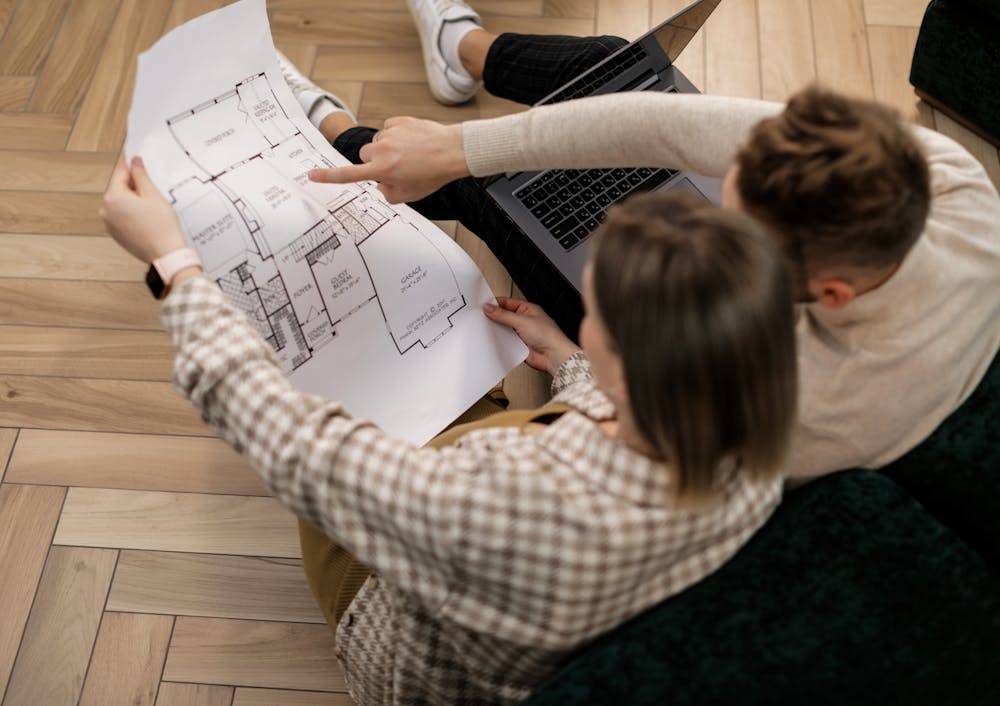Most homeowners dream of living in a home that reflects sophistication and elegance—a space that feels like a personal retreat, designed with style and intention. But let’s face it: transforming a home into the epitome of luxury usually comes with a hefty price tag. But you don’t have to drain your savings to create a home that feels high-end.
With the right approach, even a modest budget can deliver impressive, luxe-looking results. The key is finding a smart balance between aesthetics and functionality. This balance is especially crucial in states like North Carolina, where homes must be more than just beautiful. Given the region’s exposure to rain and natural disasters, a home must be durable, not just aesthetically pleasing.
This guide will walk you through some smart and practical ways to design a home that doesn’t just turn heads but also stands the test of time—and the elements.
1. Know Your Numbers: Smart Financing for Smarter Design
Great design often starts with a great plan, and that plan begins with understanding your budget. While North Carolina offers affordable living in many cities and towns, larger upgrades or essential home improvements may still require funding beyond your savings. That’s where financing comes in.
One option to consider is a home equity loan. It allows you to borrow against the value you’ve already built in your home, which can be especially useful if you’re planning a remodel that adds further value. However, it’s important to know what you’re committing to. Take the time to understand current home equity loan rates in North Carolina, how much you’re eligible to borrow, and the repayment terms. Talk to a loan officer or financial advisor to make sure this route makes sense for your situation. The goal is to enhance your home’s function and style without overextending yourself financially.
2. Prioritize Purpose: Design That Solves Problems
Luxury isn’t about having more things—it’s about having the right things that make your life easier. Before you dive into design inspiration or start shopping for furniture, take a step back and think about what’s working and what’s not. Is your kitchen layout inefficient? Do you struggle with limited closet space? Does your living room lack natural light?
You need to solve these issues. A beautiful space means nothing if it doesn’t improve the way you live. Consider flow, storage, and comfort as your foundation. When you design around your lifestyle, your home will feel more tailored and thoughtful—and that’s where the real luxury begins.
3. Choose Timeless Over Trendy
Trends can be fun, but they fade quickly. If you’re working with a limited budget, investing in classic design elements is always a safer move. Neutral color palettes, clean lines, and quality materials age gracefully and provide a versatile base for you to build on.
That doesn’t mean your home has to be boring. You can still inject personality through smaller, interchangeable items like cushions, artwork, or even a bold rug. These are much easier and less expensive to swap out when styles evolve. By choosing a timeless foundation, you’ll avoid the constant urge to redecorate and save money in the long run.
4. Maximize Every Inch: Smart Layouts Make a Difference
You don’t need a massive home to enjoy a luxurious feel. What matters more is how well your space is used. A smart layout can make even the smallest home feel open, organized, and elevated. Walk through each room and consider how it functions day-to-day. Could you add built-in seating with hidden storage? How about converting an awkward nook into a mini office or reading corner?
Multi-functional furniture, open shelving, and vertical storage are all ways to maximize space without adding square footage. When each area has a clear purpose and feels easy to move through, your home becomes a place of ease—not clutter or confusion.
5. Invest Where It Counts
When working with a limited budget, knowing where to splurge and where to save is key. Not every corner of your home needs top-tier finishes, but some areas deserve special attention. Focus on elements that impact your daily life and carry long-term value—like flooring, windows, kitchen surfaces, and bathroom fixtures. These are the touches you’ll use and see every day, and they tend to influence how people perceive your home’s overall quality.
For example, engineered hardwood floors or luxury vinyl planks may cost more upfront than cheaper alternatives, but they last longer and add an elevated look. In the kitchen, quartz or granite countertops offer a polished aesthetic and long-term durability. Spending wisely in high-traffic areas ensures both beauty and performance, while more decorative features like wall art, accessories, or rugs can be sourced affordably without compromising style.
6. Embrace the Power of Paint
Paint remains one of the most affordable and transformative tools in your design toolbox. Whether you’re freshening up a tired room or experimenting with a bold new look, paint lets you shift the mood of a space almost instantly. Light, neutral shades open up smaller rooms and reflect more natural light, making everything feel larger and airier. Darker tones can add drama and elegance, especially in dining areas, offices, or powder rooms.
Accent walls, painted ceilings, and contrasting trims are all creative ways to add visual interest without the cost of wallpaper or paneling. You can also repaint old furniture to give it a second life. The right paint choice can modernize your space, disguise imperfections, and create cohesion throughout your home—all for a fraction of the cost of a full renovation.
7. Think Like a Designer: Details Matter
Sometimes, it’s the smallest upgrades that make the biggest difference. If your home feels a little too “builder basic,” focusing on the finishing touches can take it to the next level. Swapping out standard cabinet handles for brushed brass or matte black pulls can give your kitchen or bathroom a more custom feel. Upgrading outlet covers, vent grates, and door hardware can subtly but significantly enhance your space.
Adding crown molding or baseboard trim instantly elevates plain walls and gives rooms a more polished look. Even thoughtful staging—like neatly arranged shelves or a styled entry table—helps your home feel curated, not cluttered. These details signal that every inch of your home was considered, which is often what separates basic from beautifully designed.
Luxury is no longer about size or price—it’s about feeling. A home that looks stunning and works beautifully is achievable, even on a modest budget. By following these tips, you can create a space that truly reflects both style and substance. The result is a home that feels rich in character, resilient in function, and welcoming every single day. When you design with purpose and care, luxury isn’t out of reach—it’s right where you live.





